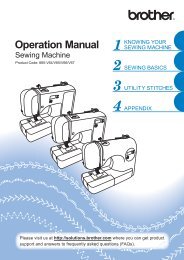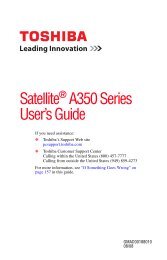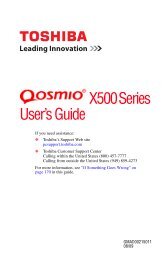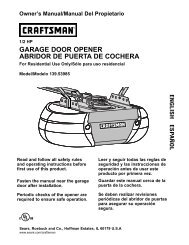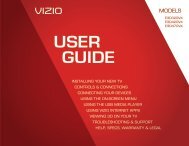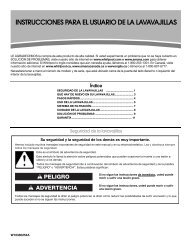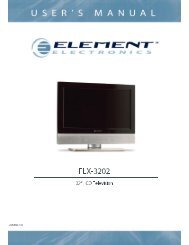Satellite® T210/T230 Series User's Guide - Howard Computers
Satellite® T210/T230 Series User's Guide - Howard Computers
Satellite® T210/T230 Series User's Guide - Howard Computers
You also want an ePaper? Increase the reach of your titles
YUMPU automatically turns print PDFs into web optimized ePapers that Google loves.
210 Glossary<br />
M<br />
N<br />
load — To move information from a storage device (such as a hard disk)<br />
into memory for processing.<br />
local area network — See LAN.<br />
logical drive — A section of a disk that is recognized by the operating<br />
system as a separate disk drive. A system’s logical drives may differ<br />
from its physical drives. For example, a single hard disk drive may<br />
be partitioned into two or more logical drives.<br />
memory — Typically refers to the computer’s main memory, where<br />
programs are run and data is temporarily stored and processed.<br />
Memory can be volatile and hold data temporarily, such as RAM, or<br />
it can be nonvolatile and hold data permanently, such as ROM. A<br />
computer’s main memory is RAM. See also RAM, ROM.<br />
microprocessor — See Central Processing Unit (CPU).<br />
MIDI (Musical Instrument Digital Interface) — A standard for<br />
connecting musical instruments, synthesizers, and computers. The<br />
MIDI standard provides a way of translating music into a form<br />
computers can use, and vice versa.<br />
modem — Short for “modulator/demodulator.” A device that converts<br />
information from digital to analog, and back to digital, enabling<br />
information to pass back and forth between digital computers and<br />
analog telephone lines.<br />
motherboard — The computer’s main circuit board that contains the<br />
processor, memory, and other primary components.<br />
MS-DOS prompt — See system prompt.<br />
multi-function drive — A DVD drive that can read and write to CD and<br />
DVD media.<br />
multimedia — A combination of two or more media, such as sound,<br />
animation, and video in a computer program or presentation.<br />
Musical Instrument Digital Interface — See MIDI.<br />
network — A collection of computers and associated devices that are<br />
connected by communications facilities. A network allows you to<br />
share data and peripheral devices, such as printers, with other users<br />
and to exchange electronic mail.



